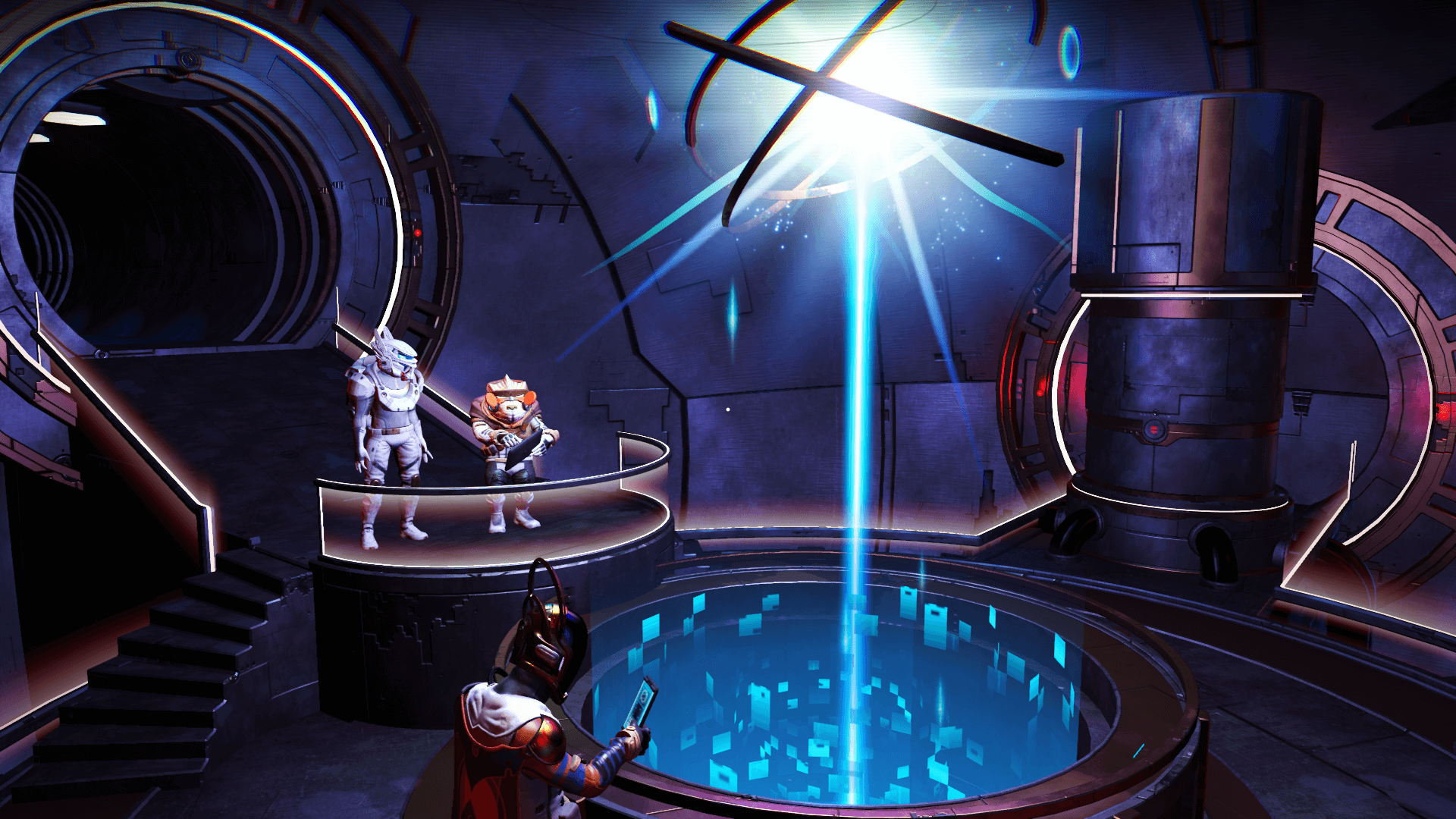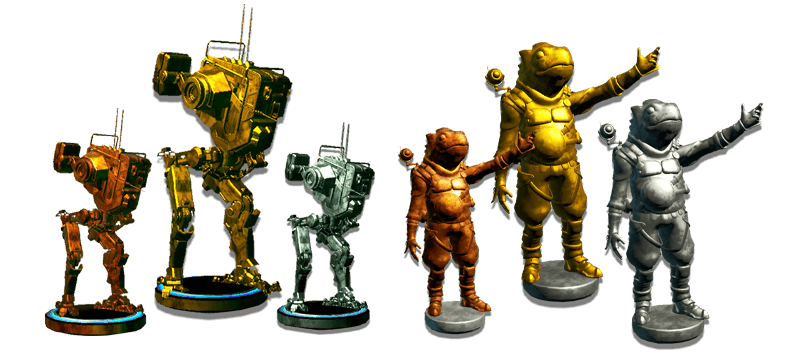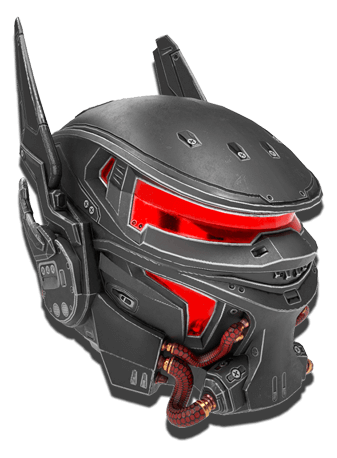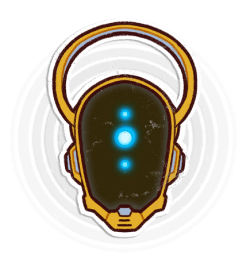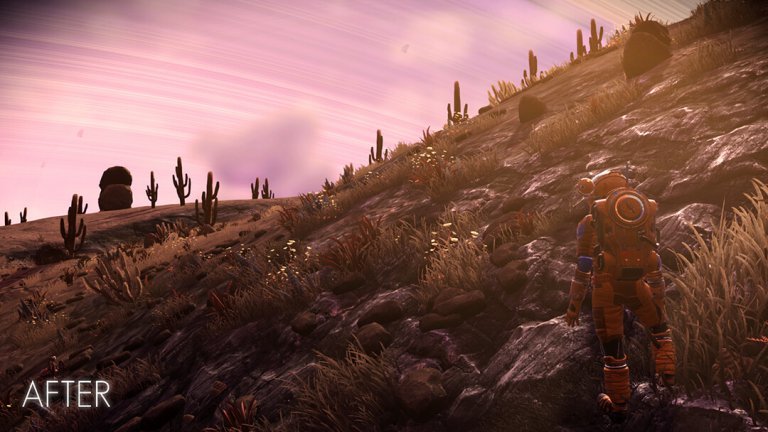
https://www.nomanssky.com/2018/09/development-update-1-60/
Hello Everyone!
Seeing all the player stories and creations emerging from the recent updates has been fantastic motivation for the team here. Thank you for the tremendous effort in highlighting important issues with clear feedback - but thank you also for simply enjoying the game (and for sharing that enjoyment online where we can see it!) It's why we continue to do what we do.
As we touched on in the last Development Update, we are busy brewing up some larger features as part of the longer journey for No Man's Sky. We are aiming to share further previews of what's coming up, as soon as we are ready. In the meantime, this week introduces a new update, 1.60, which includes the features highlighted below.
Specialist Polo has collated all the data they've received about creature appetites, diets, and digestion, and are currently analysing the results. Any travellers who collected a mysterious new substance during this research mission may be able to fetch a reasonable price for it at a Trade Terminal... or find a different method of converting it into valuable currency.
However, scientific progress is never without adversaries, and an old threat is weighing on Polo and Nada's minds. Polo will again reach out to their Traveller-friends for assistance. This time, they wish to gather data on the sentinels that patrol the galaxy and seek to eliminate anomalous entities such as non-convergent Gek and Korvax lifeforms.
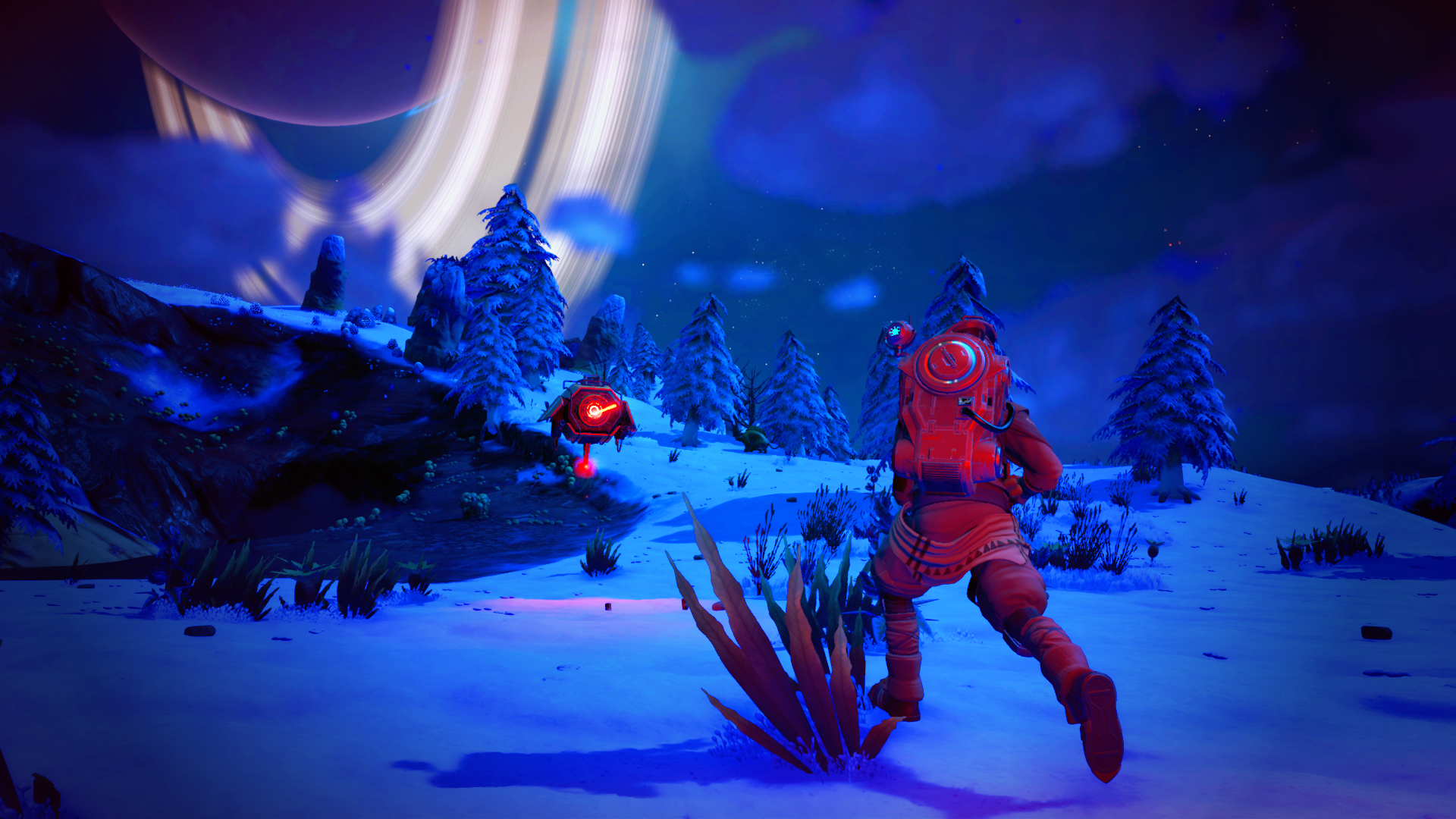
Polo believes that a deeper understanding of sentinel intelligence may help give the Space Anomaly an edge in their evasion of the sentinel forces, and reveal more insight into this renewed galactic generation. Quicksilver will be awarded to all Travellers who participate in the research, and can be processed by Polo's Synthesis Bot in exchange for a number of items - including several new to this week.

For Traveller bases, a statue of a relatively rare, but consistently awe-inspiring, long-necked quadrupedal species.

A placeable portrait of a Traveller who will be familiar to many explorers.
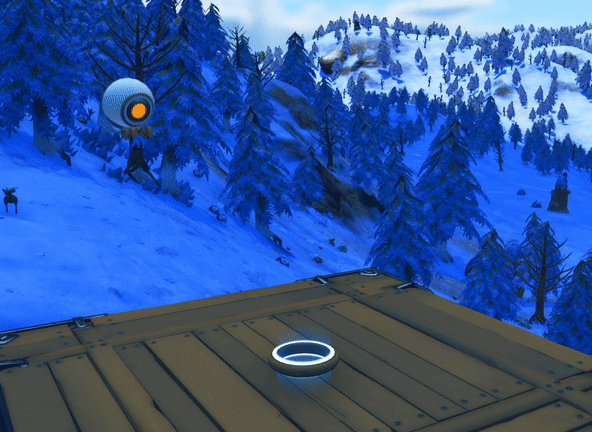
A miniature, autonomous drone is available to build at your base, to provide silent but reliable robotic companionship for weary Travellers on their return home.
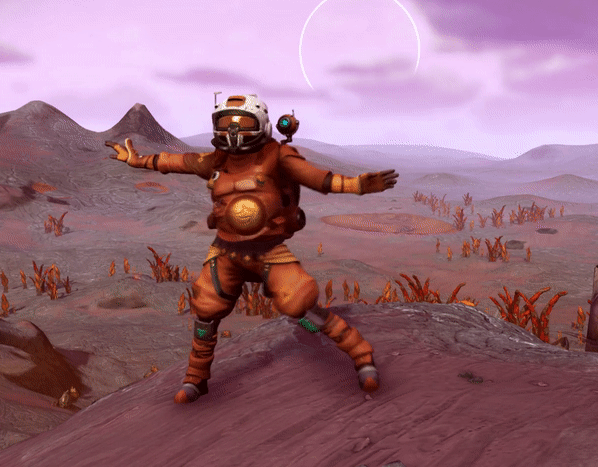
A lively dancing gesture, to commemorate moments of victory and celebration.
Even if you missed out on some of the previous research missions, you can still participate in this week's mission - and more diverse means of earning Quicksilver will soon be available too.
Patch 1.60 is live on Steam today. It includes a large list of fixes and improvements - notably the new features we previewed last week, as well as the new Quicksilver Synthesis Bot items. The complete list is available below.
Last week we gave you a sneak peek of upcoming features, I'm delighted that most of them are already made it into version 1.6, along with a whole bunch of fixes and tweaks.We have some exciting features in the pipeline for No Man's Sky which we're looking forward to sharing with you all.
In the meantime, thank you again for being here with us, for reading these updates, and for playing the game.Thank you so much,Sean
- Added the ability to customise the player's body shape in the Appearance Modifier.
- Enabled quick menu keybinding for PC players.
- Fixed an issue that could prevent other players' bases from downloading while exploring.
- Restored the ability to use keys/buttons on the Quick Transfer inventory popup.
- Dying after falling into space no longer removes items from your inventory. Falling into space in Permadeath will reset your character into a safe position instead of killing you.
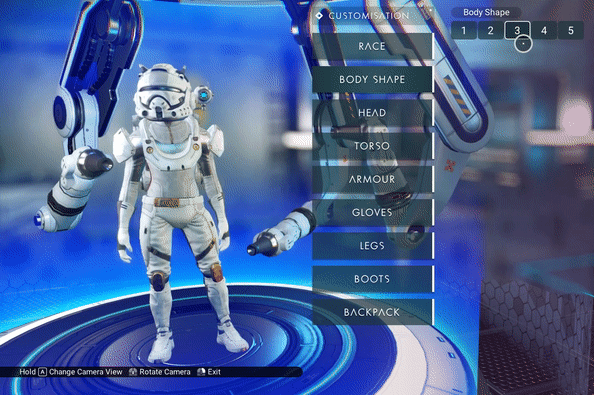
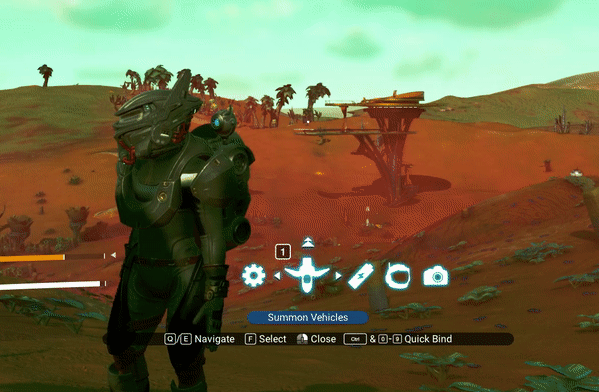
- Added additional landing pads to the Space Anomaly and Atlas Stations.
- Fixed an issue that prevented deleted bases from being cleared out from the teleporter list. Any new deleted bases will be automatically removed. Existing entries may have to be visited to successfully be removed from the list.
- Fixed an issue that caused players with Teleporters to be returned to their Base Computer instead of the Teleporter Terminal.
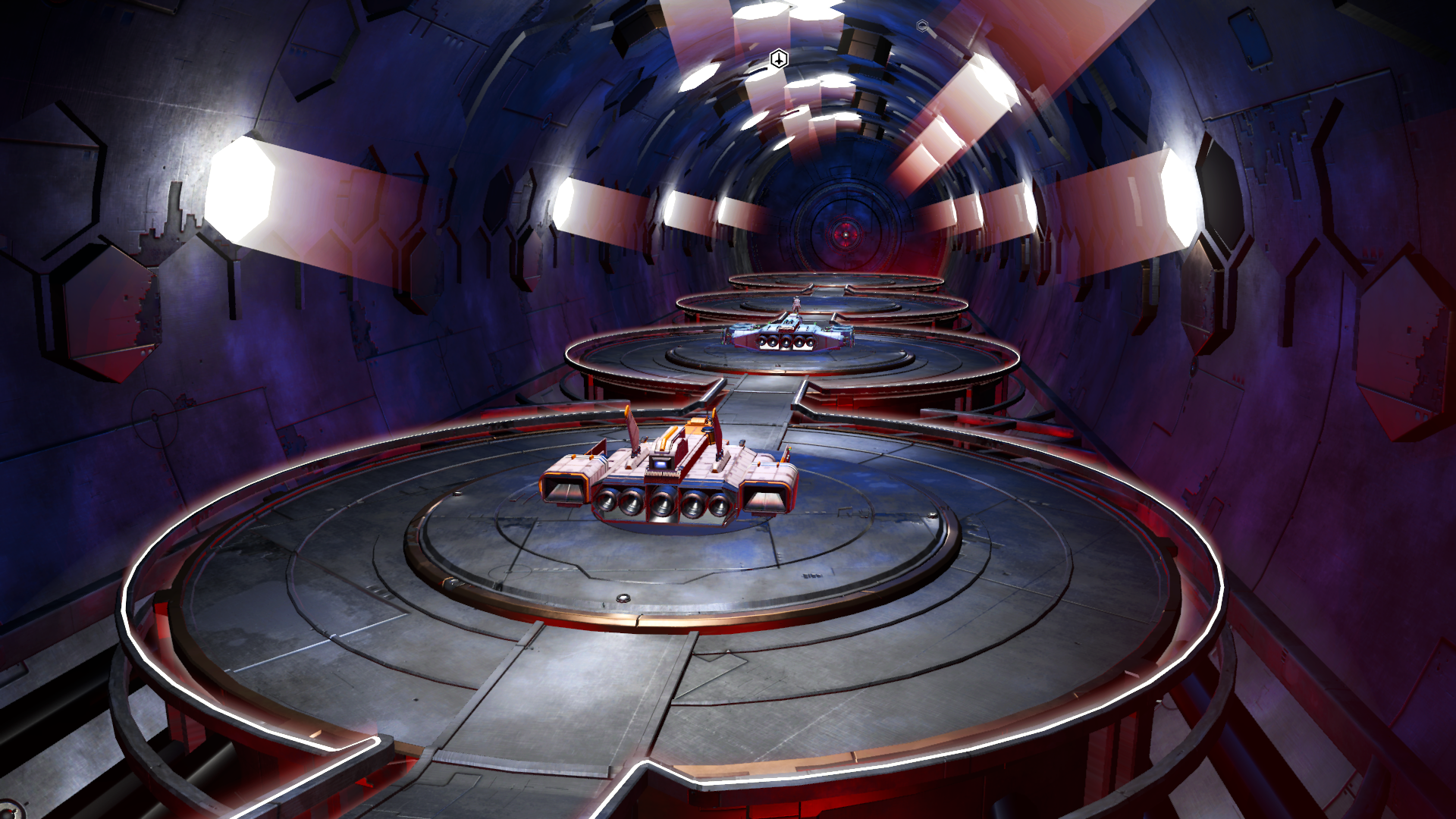
- Introduced a number of optimisations to the audio system and fixed some audio glitches.
- Fixed some missing audio in the Quicksilver shop.
- Introduced a number of additional general optimisations.
- Fixed an issue that caused ricochet projectiles not to damage some objects.
- Fixed an issue that prevented rocket boots from functioning (double-tap A to activate or chain boost jumps).
- Added the ability to untag markers.
- Fixed an issue that caused tagged markers to vanish when entering Exocraft.
- Fixed an issue that caused too few predators to be interested in hunting the player.
- Replaced storage containers on freighters with purpose-built storage rooms. Materials have been refunded and new blueprints added automatically. Build the new rooms to access stored items.
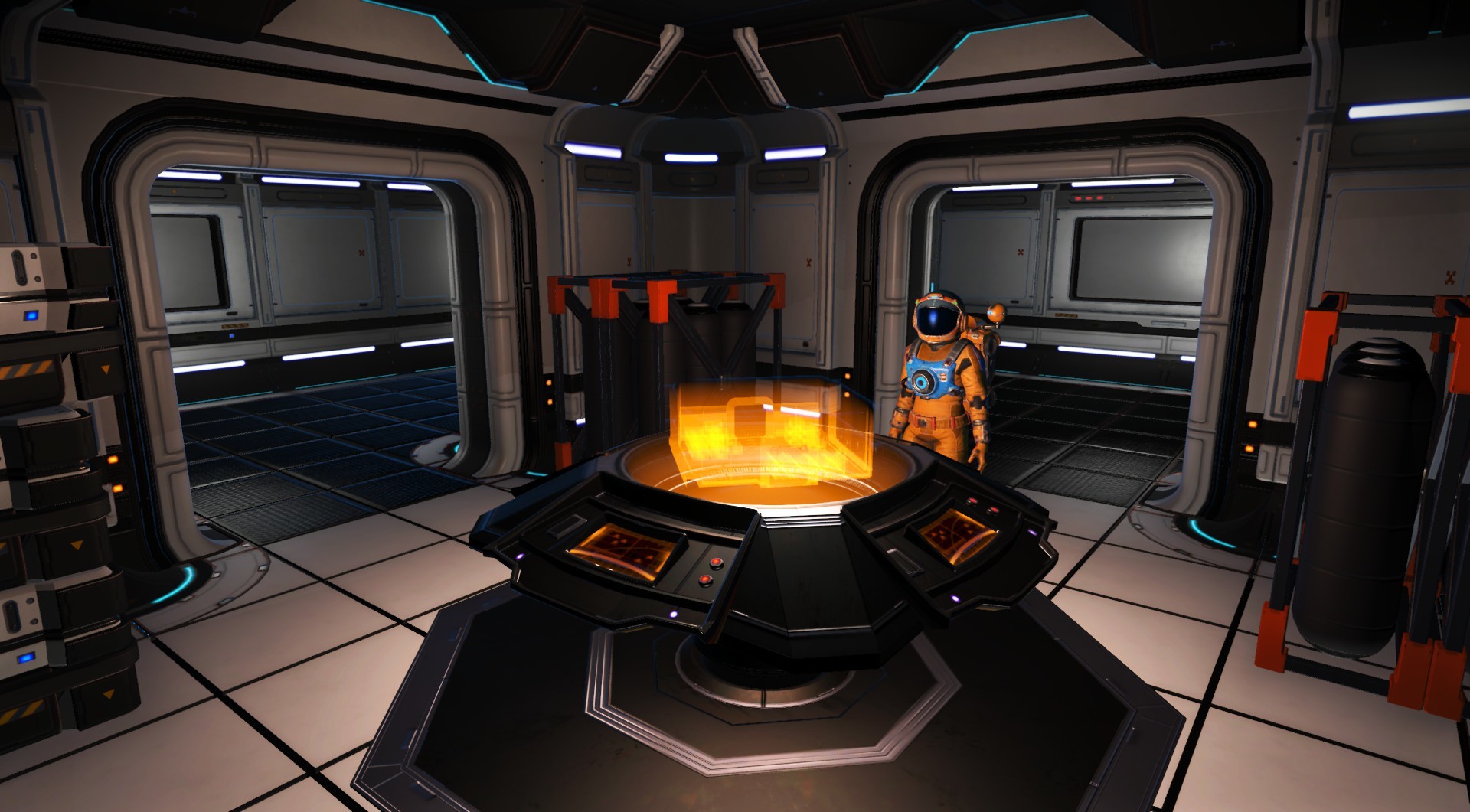
- Added text chat functionality to Orb multiplayer on PC.
- Added new attack behaviours to the Biological Horrors...
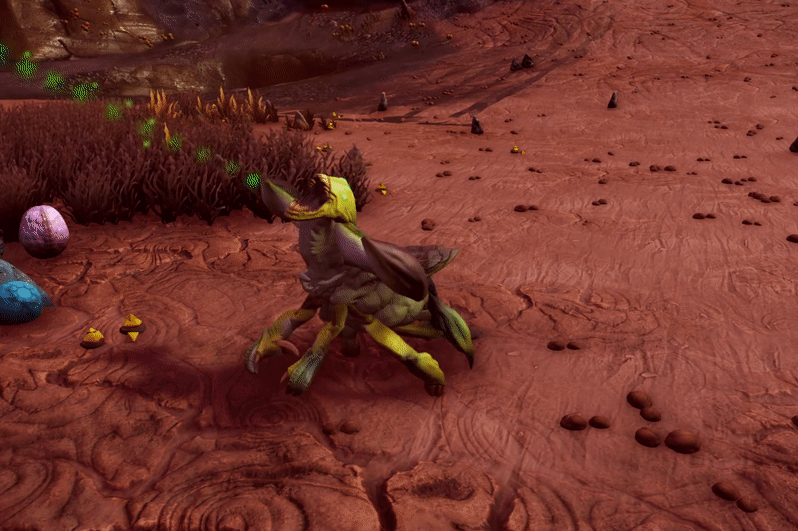
- Fixed a number of issues around Nada + Polo's dialogue onboard the Space Anomaly.
- Fixed a network error in base building.
- Fixed a crash in base building.
- Fixed a crash in the main menu.
- Fixed a crash in the inventory system.
- Fixed a crash related to multiplayer Monuments.
- Fixed a crash in region generation.
- Fixed a number of miscellaneous crashes.
- Added rich presence text for the Steam client.
- Fixed an issue that caused discoveries made in a multiplayer session to not immediately sync with other players in that session.
- Fixed an issue that could cause technology to vanish when being repaired.
- Fixed an issue that caused the value of repaired ships + weapons to be too low when trading in.
- Fixed an issue where Pugneum was refined into Big Ball.
- Replaced some duplicated item icons.
- Fixed a number of visual glitches with terrain rendering.
- Fixed an issue that caused timers not to function properly in multiplayer.
- Fixed an issue that could stop base parts being deleted despite the player not being inside the object.
- Fixed an issue that could cause creature feeding missions from the Mission Board to have not appear in the log.
- Fixed an issue where multiplayer Monuments had a missing label.
- Fixed an issue where ship summoning was missing a sound.
- Improved the animations of various alien creatures (particularly those with an above average number of legs).
- Fixed an issue that could cause the Multi-Tool to rotate out of place in the player's hands.
- Fixed an issue that prevented players with two-handed Multi-Tools from melee boosting.
- Fixed an issue where the camera change key in the Appearance Modifier didn't work on PC.
- Removed some outdated items from the Guide catalogue.
- Fixed an issue where Quads + Walkers showed incorrect information when viewed through the Analysis Visor.
- Fixed a number of collision issues onboard frigates.
- Fixed a collision issue with base doorways.
- Allowed Exocraft geobays to be built on top of other structures.
- Added a visualisation of the terrain complexity cap for bases, to notify players when no further edits can be saved. (Please note this relates to terrain carved by placing base parts, not edits made directly by the Terrain Manipulator.) A system to allow players to remodel base terrain and reclaim edits is in progress.
- Improved interaction camera positioning on Boundary Failure objects.
- Fixed an issue where Hexite could continue to spawn after the relevant community event.




